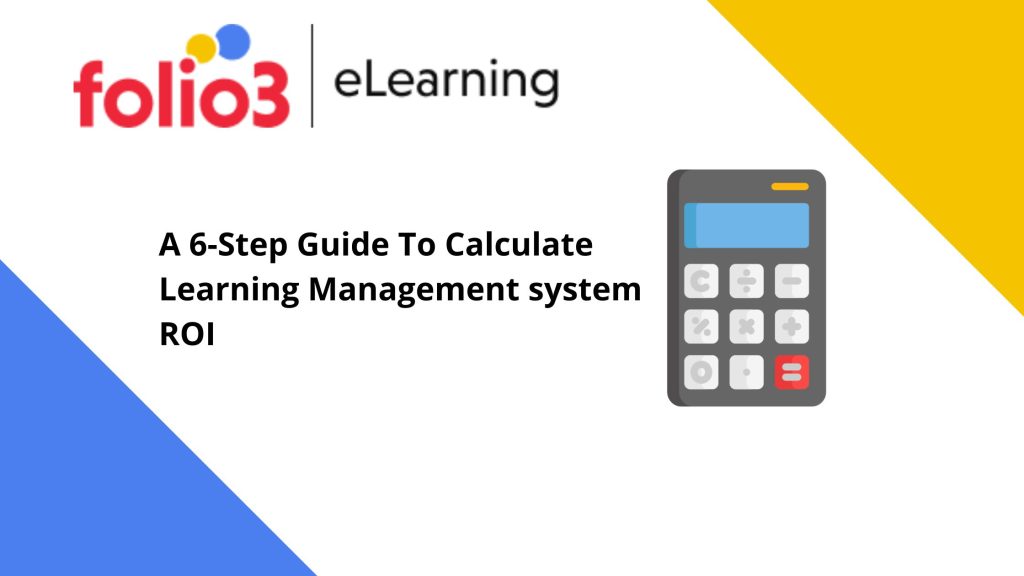
Introduction
An LMS is a practical tool that has become more well-known recently, and for good cause. Thanks to its anytime, everywhere access and customization choices, eLearning has established itself as the norm and is gradually displacing conventional classroom arrangements. This technology is a useful tool for companies and large organizations to provide staff employees with online training programs on a global scale. Custom LMS development platforms are currently used to manage departmental orientation, health and safety training, and skills training with ease. Calculate Learning Management System ROI, or ROI LMS is essential because an LMS is a significant investment for any business. Let’s examine the process of Calculating LMS ROI returns in more detail.
Executive Summary
If you haven’t figured out how to determine your ROI LMS and are searching for Value for Money LMS, our experts have compiled 6 step-guide for you. In today’s how-to-article, you’ll learn how to assess the precise value it will provide to your bottom line in this post. Because not all advantages of a custom LMS development platform can be quantified, several variables may be followed to arrive at a precise ROI with the right LMS system.

The Six Steps Guide To Calculate Learning Management system ROI
Step # 1 – Set Objectives For The Training
Before offering a corporate training platform, every organization must have a training strategy and distinct goals. Understanding the training objectives, what you hope to gain from the training, and what measurements should be used is crucial for an organization. Your goals and strategies will be used to build and deliver the training program for your staff. If you meet all of your predetermined goals after the training and your staff is able to accomplish the objective, the training program you offer is successful and can advance your business.
Step # 2 – Analyze Productivity And Employee Retention Rates
Corporate training can increase productivity and help with employee retention if it is done properly. Employees given access to opportunities for professional growth are much more inclined to stay around because upgrading their skills gives them a sense of authority. When workers receive the right training, it will show in their job. The effectiveness of the training program can be determined by increased staff retention and productivity.
Step # 3 – Analyze Data Integration And Compatibility
Your new LMS could not work well with your existing third-party solutions or provide a format that is appropriate. In that situation, you’ll be responsible for paying for new software. Additionally, there is the issue of data integration time and resources to take into account. How long, for instance, will it take your L&D team to transfer user data and existing resources to the new system? Will they need any more equipment or personnel to complete the task? It is sage to make informed decisions and plan ahead. Long-term savings are possible if you choose a value-for-money LMS.
Step # 4 – Figure Out The LMS Learning Curve
To use the new LMS and its capabilities, your L&D team can occasionally need extensive training. This is yet an additional expense to consider when Calculating learning management system ROI. This also applies to your audience. Will they need one-on-one training sessions or online training courses to become used to the new platform? If so, how much time and money should you set aside for the LMS induction program?
Step # 5 – Analyze the time spent
Platforms for learning management systems can cut down on training time. An effective solution for managing staff time priorities is a corporate training LMS. It gives users the freedom to use their LMS platform whenever and wherever it suits them. Employees can efficiently manage their time thanks to this. They can spend their free time on productive work or for themselves.
You must assess the time it takes employees to complete a course now with the time it took them to do so in the past to determine how much time was saved from order to determine how much time was saved as a result of employing a corporate training LMS. It indicates that the training course is effective and appropriate for your personnel if the time has been drastically reduced.
Step # 6 – Analyze The LMS’s Operation Expenses
The profits on your investment are also based on the LMS you choose. There are many different systems available, each with advantages and disadvantages. The cost of cloud-based LMS solutions is low. They avoid the costs associated with maintaining an internal data storage system that needs pricey technical equipment. There are no installation or maintenance fees with a cloud-based LMS. Additional training is not required because the approach is so straightforward.
The total cost of ownership of some cloud-based learning management systems, however, might increase over time. Since you pay licensing fees upfront, an on-premises LMS offers the user total control and is more affordable in the long run. In either case, you should also account for maintenance and the expenditures associated with creating and maintaining online training materials, which are sometimes forgotten when creating an LMS implementation expense.
Conclusion
Any organization that wants to implement a custom LMS development must make a big investment. It must thus make financial sense. Not only are online training courses delivered via this technique, but it also helps reduce costs. Sadly, not all ROI LMS provide profitable returns. You must consider your software’s functionality and efficiency to determine an estimate of your LMS’s worth.
It ought to reduce logistical expenses, save time and money, and decrease staff turnover. Additionally, a custom LMS development also needs to be long-term maintenance-affordable. Consider the big picture. When you evaluate its purchase price and operating expenses in five years, it ought to have generated a profit.

FAQs
ROI = (Net Benefits of training / Costs of Training) x 100.
Return on investment (ROI) is a rough indicator of how profitable an investment is. ROI is determined by deducting the investment’s original cost from its end value, dividing the result by the investment’s price, and then multiplying the result by 100.









